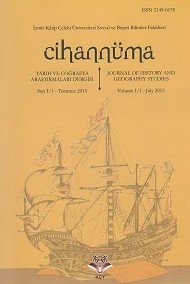Osmanlıların Bağdat'taki Veli Topu: Ebu Hızzame
Historical Sacred Cannon of Ottomans in Baghdad: Abu Khizzama
Author(s): Vehbi GünaySubject(s): Military history, 16th Century, 17th Century, The Ottoman Empire
Published by: İzmir Kâtip Çelebi Üniversitesi, Sosyal ve Beşeri Bilimler Fakültesi
Keywords: Ottoman Empire; Safavids; Iraq; Baghdad; Murad IV; Baghdad Campaign; Ottoman Artillery; Big Historical Cannon; Abu Khizzama;
Summary/Abstract: The continued events that emerged in the early 17th century after Baghdad was taken under the rule of the Ottoman Empire by Sultan Suleiman, the Law-giver, in 1534, finally led to the city’ fall into hands of Safavids in 1624. The Ottoman Empire’s campaigns and sieges to take the city back were unsuccessful; and Sultan Murad IV, who had conquered Yerevan and Tabriz in 1635, re-added Baghdad to the Ottomans lands after a long period of siege in 1638. Sultan Murad IV brought several artillery cannons with his powerful army to besiege the city on the edge of Tigris River, which was defended by the reinforced walls and fortifications. Some of huge cannons actively used in the Baghdad siege were not brought back and left for protection and defense of the city. These huge guns in Baghdad were used in the World War I during the besiege of a British Army garrison in the town of Kut Al-Amara. These historical cannons which joined the war again 278 years after their first operation in Baghdad. One of the Ottoman cannons in Baghdad, belonging to the Sultan Murad era, was publicly called “Abu Khizzama”. Various beliefs and rituals were developed about this famous siege cannon, and its site was accepted as sanctuary. This study, firstly presents a general assessment of the recapture of Baghdad, one of the most important strategic centers of the Middle East, by the Ottomans and then, discusses some information on the historical artillery gun of Baghdad, which survives today as the Ottoman legacy in these lands.
Journal: Cihannüma: Tarih ve Coğrafya Araştırmaları Dergisi
- Issue Year: VI/2020
- Issue No: 1
- Page Range: 79-121
- Page Count: 44
- Language: Turkish

